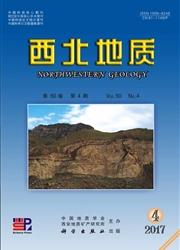

 中文摘要:
中文摘要:
通过对碧口铜钱坝南-托河乡南区段变玄武岩的地球化学分析.结果表明该套岩石由碱性和亚碱性的拉斑系列玄武岩组成,岩石的Nb、Ta、Ce含量,Ba/Ce、Ti/Y、Zr/Y值显示了洋岛玄武岩的地球化学特征。N—MORB标准化蛛网图和球粒陨石标准化图解表明,本区洋岛拉斑玄武岩和洋岛碱性玄武岩具有共同的岩浆源区。玄武岩的2Nb—Zr/4-Y、TiO2-10MnO—10P2O5、Ti/Y—Ba/Zr与Ti/Y—Ba/Nb判别图解均表明,本区火山岩产生于大洋板内的构造环境,从而为该地区新元古代出现过洋盆提供了重要证据。
 英文摘要:
英文摘要:
Geochemical analysis of the volcanic rocks of the Bikou group from the southern Tongqianban- Tuohe region reveals that they are of the alkaline basahs and subalkaline tholeiitic basahs, which have an affinity to the typical ocean island basahs (OIB) in the contents of Nb, Ta, Ce and the Ba/Ce, Ti/Y and Zr/Y ratios. In addition, the N-MORB-normalized spider diagram and the Chondrite-normalized REE pattern show that the two kinds of rocks were generated from the same parental magmatic source. The tectonic discrimination diagrams of the 2Nb-Zr/4-Y, TiOz-MnO-P2O5, Ti/Y-Ba/Zr and Ti/Y-Ba/Nb have fairly signified that the rocks occurred in an intra-oceanic tectonic setting, which would be a critical evidence to confirm an oceanic basin developed in the study region in the Neoproterozioc time.
 同期刊论文项目
同期刊论文项目
 同项目期刊论文
同项目期刊论文
 期刊信息
期刊信息
